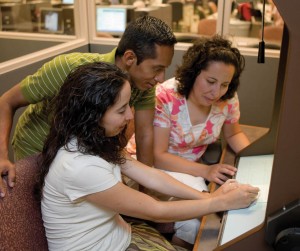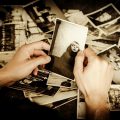A collateral line refers to ancestors from whom you don’t directly descend, but that are still in your ancestral family. Such as aunts, cousins or your 5th Great Grandmother’s siblings.
All too often in Family History research, these collateral ancestors are set aside with little thought. . I have often run into beginning genealogists who have confessed their determination to trace their direct line back as far as possible but have already come to a dead end fairly early in their research.
Where are you stuck?
I ask each of them the same questions, “Who is the ancestor you’re stuck on?”, “Exactly what information do you have on this person?” “What information are you looking to find for this person?” and “What have you already done to try to find this information?”
 I am usually given a variety of answers, but they almost always fall within the same range. That of searching for information only through the direct son or daughter of this direct ancestor on whom they are trying to find more information. Let me give you a hypothetical:
I am usually given a variety of answers, but they almost always fall within the same range. That of searching for information only through the direct son or daughter of this direct ancestor on whom they are trying to find more information. Let me give you a hypothetical:
Sandy was searching for information on her 4th Great Grandfather. She knew his name was Bernard Wilkins and that was all. She had no dates of birth, marriage or death for him. She knew that he had lived in Knox County Tennessee, as four of his children including her 3rd Great Grandfather James Wilkins, were born there.
She thought first of searching the County Death records, not entirely sure whether he had actually died there or not. She found nothing. She had searched the church cemetery where James had died, hoping his father might be buried there too. But he was not. So then she had searched for the obituary of James Wilkins. But upon finding it, she was disappointed to find no mention of James’ parents in there.
“I’m at a dead end, I’ve looked everywhere!” she says, exasperated.
But she hasn’t looked everywhere.
There are 4 other children whose obituaries she hasn’t thought to search for, simply because they’re not direct ancestors. After being told this and tracking down all of them, she finds one that briefly mentions when Bernard Wilkins came to Knox County and from where, giving her another place to start looking.
If that hadn’t yielded any results there were a number of others ways in which to try to find information, all pertaining to her collateral ancestors.
Consider Family Heirlooms
 Collateral research is nearly always essential to furthering direct line research. Consider family heirlooms. Perhaps you prize that beautiful antique photo album with three generations of family pictures inside. You realize you share a striking resemblance to your 3rd Great Aunt Martha and your father looks just like your 2nd Great Uncle John. You wonder if their descendants love looking at their photos as much as you do.
Collateral research is nearly always essential to furthering direct line research. Consider family heirlooms. Perhaps you prize that beautiful antique photo album with three generations of family pictures inside. You realize you share a striking resemblance to your 3rd Great Aunt Martha and your father looks just like your 2nd Great Uncle John. You wonder if their descendants love looking at their photos as much as you do.
But wait, photo reproductions weren’t wide spread in that day. Often all family photos were included in one photo album, and one photo album can only be passed on to one child. You may have distant relatives who have no idea pictures of family dating back that far exist!
Likewise those same distant relatives may have copies of Uncle John’s Muster Roll or a ships passenger list with not only Martha’s name on it, but that of her parents whom you haven’t discovered names for yet. And as the above example with Sandy illustrates, obituaries, along with other records may have widely varying information in them.
While one may be only one sentence stating the name of the deceased and when they died, another may practically be a biographical sketch, talking about the immigration of the family into the county, where they came from, when the parents were married and so forth. Yes, collateral lines can be crucial to breaking through that brick wall. Don’t discount them.






